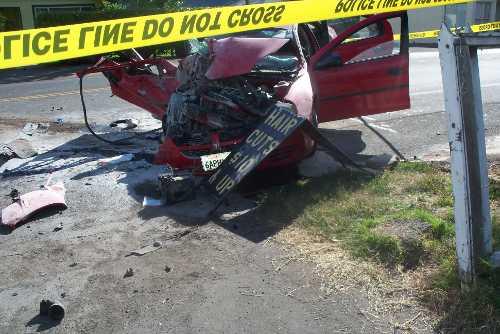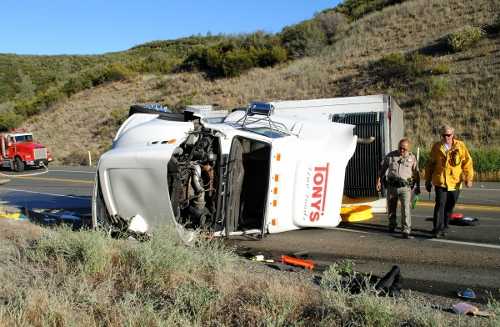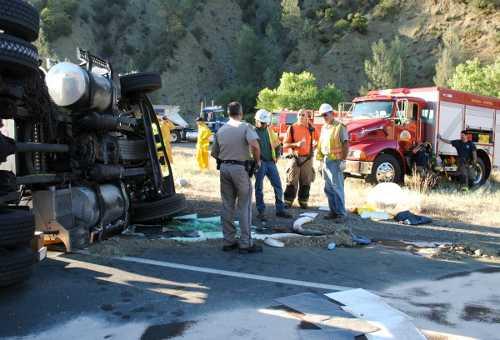LAKE COUNTY, Calif. – This week the Lake County Tribal Health Consortium will introduce to the public the draft of a first-of-its-kind health needs assessment for the county's tribal communities.
The organization will hold a meeting on Monday, July 18, to officially release the draft document for public comment.
The meeting will be held from 1 p.m. to 4 p.m. in Lake County Tribal Health's conference room B, 925 Bevins Court, Lakeport.
The document can be downloaded and viewed at www.lcthc.org or read and downloaded below.
“It's never been done before,” Daphne Colacion, human services program coordinator for Lake County Tribal Health, said of the needs assessment, which will be finalized by the end of this month.
The assessment is a critical first step in implementing the grant-funded Partnership with Parents-All People Coming Together Program, Colacion explained.
It will help guide the formation of a home visiting program for children ages birth to 5 years old, as well as programs to address alcohol- and drug-free pregnancies, relapse counseling and parenting, she said.
In addition, Colacion said the needs assessment will be an important resource for local tribes seeking grants for their own specific programs.
“It will do a lot of good for the community as well as our organization, too,” she said.
The Lake County Tribal Health Consortium was one of 18 tribal organizations that received federal funding through the Administration for Children and Families to develop the program, she said.
The funding includes $196,000 for the first of the five years of the grant, with Colacion estimating that it would be double that amount over the remaining four years, which will support program development and implementation.
Colacion said the needs assessment was conducted between February and March of this year, with the organization hosting a series of community dinners and talking circles to gather information on what local Indian peoples believed were their communities' top priorities.
“We got so much support in doing this, I think that was kind of surprising,” Colacion said.
Colacion said the top 10 priorities that emerged, from No. 1 through 10, were alcohol- and drug-free pregnancies, substance abuse prevention, relapse prevention, cultural and community events, prenatal care, infant and baby care, learning and understanding their cultures, counseling for families, anger management classes and learning tribal languages.
To Colacion, another surprising aspect of the effort was that the assessment outreach team – made up of members of tribes around the lake – reached 23 percent of the local native community, a higher-than-expected result.
Report reveals growing tribal communities
The new 116-page report contains a number of interesting facts about Indian population statistics in Lake County, where there are seven federally recognized tribes and an estimated 4,000 individuals of Indian or native Alaskan heritage, Colacion said.
Altogether, tribal people account for 5.7 percent of the county's population, while they are 1 percent of California's population and 1.7 percent of the United States population.
The Indian population of Lake County rose by 30 percent between 2000 and 2010, with the three largest local tribal communities being located in the Lakeport, Clearlake and Upper Lake zip codes.
Of the local Indian communities, 32.3 percent of the total population is under age 18, according to the report.
With the emphasis on prenatal care and healthy pregnancies, as well as health care for mothers and babies, the report showed that between 2008 and 2009 the rate of tribal women receiving prenatal care in their first trimester rose from 37 to 48.5 percent.
Also in 2009, the report said that the tribal rate of prenatal care exceeded the overall rate for Lake County, which is ranked 47th statewide for its prenatal care rates. That year Lake County's tribal prenatal care rates were nearly double the statewide tribal community rate, the report said.
From 2007 to 2008, tribal communities in Lake County also saw a reduction in low birthweight babies (weighing under 5 pounds, 8 ounces), giving tribes a 3.8 percent rate, better than the county (5.5 percent) or the nation (8.2 percent) enjoy.
Lake's tribe's have higher teen birth rates than the rest of the county, but less than half are in the younger teen age group, 15 to 17.
Tribal children are at an enhanced risk for obesity, with socioeconomic disparities contributing to that challenge, the report noted.
The assessment states, “Alcohol and drug free pregnancies were the Lake County tribal community's top priority,” noting the county's chronic problem with severe substance abuse, which affects all races, ethnicities and socioeconomic groups.
Other challenges include the finding that women in tribal communities have higher rates of maternal depression as compared to other groups, and the high numbers of tribal people suffering from “Adverse Childhood Experience,” which results from factors including alcoholism, abuse, drug use, domestic violence and health issues, among others.
Native children have higher dropout rates and lower educational achievement, with dropout rates for ninth through 12th graders higher than the rates reported for the county and state's general and native populations.
One of the most important, and probably most hopeful, lessons learned in the study is that it stated “the community is ready for healing.”
For more information call Lake County Tribal Health, 707-263-8382, Extension 137.
E-mail Elizabeth Larson at This email address is being protected from spambots. You need JavaScript enabled to view it.. Follow Lake County News on Twitter at http://twitter.com/LakeCoNews, on Tumblr at www.lakeconews.tumblr.com, on Facebook at http://www.facebook.com/pages/Lake-County-News/143156775604?ref=mf and on YouTube at http://www.youtube.com/user/LakeCoNews.
2011 Lake County Tribal Health Needs Assessment

 How to resolve AdBlock issue?
How to resolve AdBlock issue? 












